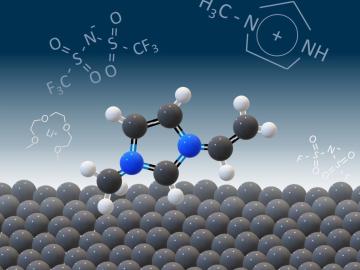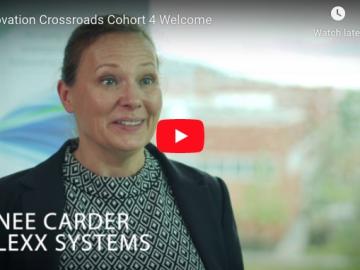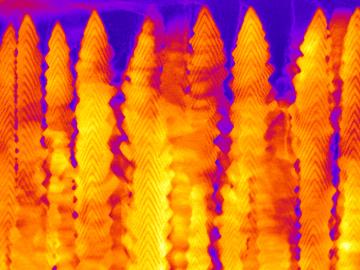
Filter News
Area of Research
- Biology and Environment (4)
- Computer Science (2)
- Energy Science (32)
- Energy Sciences (1)
- Fusion and Fission (2)
- Fusion Energy (3)
- Isotopes (3)
- Materials (23)
- Materials for Computing (5)
- National Security (6)
- Neutron Science (8)
- Nuclear Science and Technology (11)
- Nuclear Systems Modeling, Simulation and Validation (1)
- Quantum information Science (3)
- Supercomputing (12)
News Topics
- (-) Advanced Reactors (14)
- (-) Clean Water (2)
- (-) Composites (1)
- (-) Cybersecurity (4)
- (-) Energy Storage (21)
- (-) Isotopes (8)
- (-) Nanotechnology (17)
- (-) Quantum Science (14)
- (-) Security (3)
- (-) Space Exploration (2)
- (-) Transportation (15)
- 3-D Printing/Advanced Manufacturing (28)
- Artificial Intelligence (8)
- Big Data (11)
- Bioenergy (13)
- Biology (5)
- Biomedical (22)
- Biotechnology (2)
- Buildings (1)
- Chemical Sciences (5)
- Computer Science (39)
- Coronavirus (25)
- Critical Materials (2)
- Environment (29)
- Exascale Computing (3)
- Frontier (1)
- Fusion (13)
- Grid (7)
- High-Performance Computing (3)
- Machine Learning (8)
- Materials (2)
- Materials Science (37)
- Mathematics (2)
- Mercury (1)
- Microscopy (8)
- Molten Salt (2)
- National Security (2)
- Neutron Science (35)
- Nuclear Energy (31)
- Physics (13)
- Polymers (7)
- Summit (17)
Media Contacts

Scientists seeking ways to improve a battery’s ability to hold a charge longer, using advanced materials that are safe, stable and efficient, have determined that the materials themselves are only part of the solution.

After its long journey to Mars beginning this summer, NASA’s Perseverance rover will be powered across the planet’s surface in part by plutonium produced at the Department of Energy’s Oak Ridge National Laboratory.

From materials science and earth system modeling to quantum information science and cybersecurity, experts in many fields run simulations and conduct experiments to collect the abundance of data necessary for scientific progress.

Five researchers at the Department of Energy’s Oak Ridge National Laboratory have been named ORNL Corporate Fellows in recognition of significant career accomplishments and continued leadership in their scientific fields.

Burak Ozpineci of the Electrical and Electronics Systems Research Division at Oak Ridge National Laboratory has won the 2020 IEEE Power Electronics Society Vehicle and Transportation Systems Achievement Award.

Oak Ridge National Laboratory scientists seeking the source of charge loss in lithium-ion batteries demonstrated that coupling a thin-film cathode with a solid electrolyte is a rapid way to determine the root cause.

An ORNL team used a simple process to implant atoms precisely into the top layers of ultra-thin crystals, yielding two-sided structures with different chemical compositions.

The Department of Energy’s Office of Science has selected three Oak Ridge National Laboratory scientists for Early Career Research Program awards.

ORNL welcomed six technology innovators to join the fourth cohort of Innovation Crossroads, the Southeast’s only entrepreneurial research and development program based at a U.S. Department of Energy national laboratory.

A team led by the Department of Energy’s Oak Ridge National Laboratory synthesized a tiny structure with high surface area and discovered how its unique architecture drives ions across interfaces to transport energy or information.


